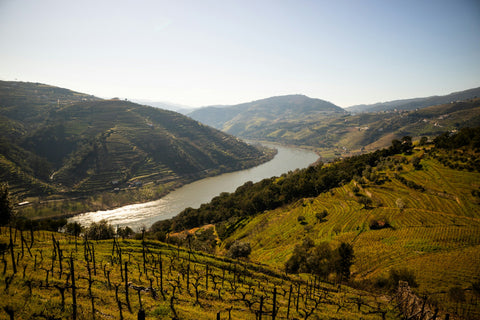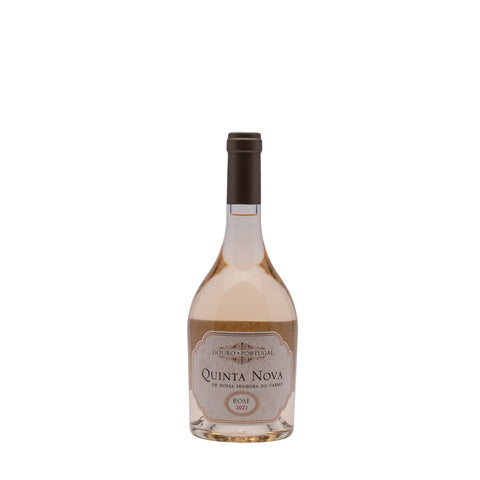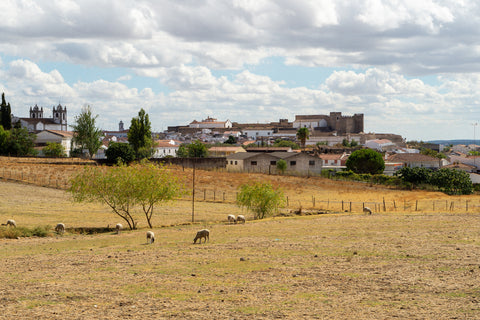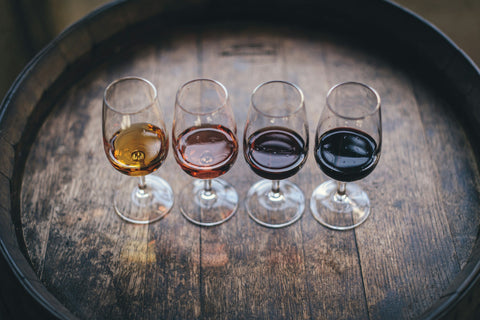Nestled in the northeast of Portugal, the Douro Valley is one of the most iconic wine regions in the world. Renowned for its exceptional quality wines, including the famous Port wine , this UNESCO World Heritage region seduces with its harmonious landscape, like a vast, carefully cultivated garden.
A legendary wine region
Contrary to its name, it is not in Porto, but in the Douro that Port wine - a fortified wine that has become iconic in Portugal and is world-famous – was born. This unique wine is produced by adding grape alcohol to fermenting grape must, giving it a sweet taste and a higher alcohol content.
As early as the 18th century, the Portuguese authorities recognized the exceptional quality of Douro wine and took steps to protect its appellation, defining strict rules for wine production in this region. In 1976, the Douro became the first demarcated and regulated wine region and therefore one of the oldest in the world.
Today, the Douro Valley produces not only Port wine, but also high-quality red, white and rosé wines.
Spectacular landscapes to explore
The Douro Valley is as famous for the beauty of its landscapes as for the quality of its wines. The Douro River, which runs through the region, is bordered by steep hills covered with terraced vineyards surrounded by stone walls. These vineyards, cultivated on schist soils, create a striking landscape, where each plot seems shaped by the hand of man. The winding roads that cross the valley offer breathtaking views and there are many lookout points from which to admire the natural beauty of the Douro.
The Douro sub-regions
The Douro Valley is divided into three main sub-regions , each with distinct geographical and climatic characteristics that influence production and create a beautiful diversity of wine.
-
Baixo Corgo: Located to the west of the valley, this is the sub-region closest to the Atlantic Ocean. The climate is wetter, and rainfall is more frequent. The wines produced here are often lighter and fruitier. It is also the region with the most dense vineyards.
-
Cima Corgo: This sub-region is considered the heart of Port wine production. Located in the centre of the valley, it benefits from a drier and sunnier climate, which allows for the production of more concentrated and complex wines. The city of Pinhão, a central point for the wine trade, is located here.
- Douro Superior: located in the east of the valley, near the Spanish border, this region is the hottest and driest. It is characterized by a wild landscape and poor soils. Thanks to its extreme climatic conditions, the Douro Superior produces powerful wines, with excellent structure and high aging potential.
The Douro River: historic artery of the Port wine trade
The Douro River originates in Spain, in the Urbión Mountains in the province of Soria. It flows for approximately 897 kilometres before ending its course in the Atlantic Ocean between the cities of Porto and Vila Nova de Gaia. The 200 km of navigable Douro are Portuguese and have played a key role in the economic and cultural history of the region for centuries, particularly in the transport and trade of Port wines.
Before the development of modern road infrastructure, the Douro was the main transport route for transporting Port wines from the vineyards of the valley to the cellars of Vila Nova de Gaia, located near the mouth of the river in Porto. Traditional barges called “rabelos” – flat-bottomed, keelless boats – were used to transport the wine barrels along the river. These remarkable, sturdy, square-sailed boats, specially designed to navigate the Douro’s rough waters and fast, and sometimes deadly, currents, were an essential means of transport until the 19th century, when the railway gradually replaced the river for the transport of goods.

|
Rabelo boat on the Douro river in Vila Nova de Gaia, Portugal
|
In addition to wine, the Douro was also used to transport other goods, such as olive oil, cereals and wood. Today, although the rabelos have become useless for commercial transport, they remain an iconic symbol of the Douro's wine heritage and can be admired at festivals or used for tourist cruises.
A wine culture rooted in tradition
The Douro wine culture is based on ancestral practices, often passed down from generation to generation. Many quintas (wine estates) are true historical treasures, and some wineries have been in operation for several centuries.
The manual harvest method is often preferred, due to the steep terrain that makes access difficult for mechanization. Visiting the quintas, you discover a unique know-how that values each stage of production, from grape harvesting to bottling. Douro winegrowers are proud to preserve the authenticity of their methods, which is reflected in the quality of the wines.
Douro wines: an unparalleled sensory experience
Douro wines are distinguished by their unique character and diversity. Here is an overview of the main wine varieties you can discover during your visit to the valley:
- Port Wine: This fortified wine, available in Ruby, Tawny, White, Vintage, and LBV (Late Bottled Vintage) styles, is the icon of the Douro Valley. Its intense and complex taste, with notes of red fruits, caramel, and spices, makes it a popular dessert wine around the world.
- Red wines: Douro red wines are powerful, rich and well-structured. They are made mainly from indigenous grape varieties such as Touriga Nacional, Tinta Roriz and Touriga Franca, which give them aromas of ripe fruit, wood and spices.
- White wines: Although less well-known than red wines and Port, Douro white wines are gaining popularity. Fresh and aromatic, they offer notes of white flowers, citrus and minerality.
- Rosé wines: Light and fruity, Douro rosé is ideal for summer days. It is generally made from the same grape varieties as red wines, which gives it a certain structure and complexity.
The best experiences to live in the Douro Valley
To fully enjoy your trip to the Douro Valley, here are some must-do activities to include in your itinerary:
Visit of Quintas
Most quintas offer guided tours with tastings, where you can taste their best wines and learn more about the production process, history and traditions of the Douro wineries. Some quintas even allow you to taste Douro wines paired with local dishes.
Here are some of the most famous ones for food tours:
Quinta da Pacheca
Quinta da Pacheca is one of the most prestigious and renowned quintas in the Douro Demarcated Region. The estate is famous for its unique Wine House Hotel concept, including accommodation in giant barrels. It offers tours with meals in the gourmet restaurant, which showcases local produce and revisited Portuguese flavours in harmony with the quinta's famous wines and ports.

Quinta do Vallado
Founded in 1716, this quinta is one of the oldest and most famous in the Douro Valley. Their visit includes a tasting followed by a gourmet lunch inspired by local flavors, with a Vallado wine list to match the dishes. Quinta do Vallado also has a charming hotel and offers dishes made with local ingredients, prepared to accompany the house wines.

Quinta Nova de Nossa Senhora do Carmo
Situated in a picturesque setting, this 250-year-old quinta offers comprehensive tours of its vineyard and winery, followed by a gourmet lunch or dinner at their restaurant "Conceitus Winery". Dishes are designed to pair with the estate's wines, offering a true sensory experience where each dish is in perfect harmony with the wines served.

Quinta das Carvalhas
Quinta das Carvalhas offers an immersion into the Douro terroir, with vineyard tours led by expert guides. The quinta’s restaurant offers gourmet meals where traditional Portuguese dishes, such as pork and seafood, are prepared to pair with their wines and ports. Their al fresco lunches, overlooking the Douro Valley, are particularly popular.

These quintas offer an immersion in the gastronomic and wine culture of the Douro Valley, with gourmet menus and wine pairings. A visit to one of these quintas is an opportunity to discover the flavors of the Douro in an exceptional setting.
Cruise on the Douro
Sailing on the Douro River is a unique experience that illustrates the Portuguese art of living in a gentle Mediterranean climate just a stone's throw from the Atlantic. These cruises will allow you to admire the terraced vineyards and discover charming little towns nestled in the meanders of the river. Several types of cruises are available, ranging from multi-day trips on luxury ships to one-hour trips.
To explore the region from a different perspective, a river cruise is an ideal option. These excursions allow you to observe the vineyards up close and appreciate the peaceful rhythm of the valley.
Wine tasting in Porto
After exploring the valley, head to Vila Nova de Gaia, just across from Porto, where you’ll find many Port wine cellars. Some of these cellars date back to the 18th century and offer tastings in an authentic setting.
Here are some of the most renowned Port wine tasting cellars in Vila Nova de Gaia , across from Porto, each offering a unique experience to discover Port wines.
Sandeman Cave
Sandeman is one of the most iconic wineries, founded in 1790. It is easily recognizable thanks to the silhouette of the "Don" on its labels, the brand's emblem. The tour offers an immersive journey into the history of Port production with careful staging. Visitors can choose from different tasting options, including classic and vintage ports.

Taylor's Cave
Taylor's is one of the oldest Port wine houses, established in 1692. Located on the heights of Gaia, it offers panoramic views of Porto. Taylor's offers a comprehensive guided tour with an audio guide, covering the history, winemaking techniques and grape varieties used. The tasting often includes aged ports and rare wines from the house.

Graham’s Cave
Graham's is a winery founded in 1820, known for its vintage Port and family production. The venue is located in a historic building, with a magnificent view of the Douro. The tour includes explanations of the aging process and a tasting of premium Ports. Their aged "tawnies" are among the most appreciated.

Cave Calem
Founded in 1859, Cálem Winery is popular with visitors for its friendly and immersive approach. Tours offer explanations of the traditions and art of Port wine aging, followed by tastings in a modern space. Some evenings, they offer fado performances that add an authentic touch to the experience.

Ferreira Cave
Ferreira is an iconic Port house, founded by a Portuguese family in 1751. Known for its commitment to traditional methods, the winery offers tours that focus on the brand’s Portuguese heritage. Tastings often include reserve ports, accompanied by explanations of the specific flavors and aromas of the different types of Port.

These wineries offer enriching and varied experiences, each presenting Port wine with its own style and history. Visiting several wineries allows you to compare techniques and discover the subtle differences between the wines.
Hiking and viewpoints
If you love nature, the Douro Valley offers beautiful hiking trails with panoramic views of the vineyards and the river. The viewpoints of São Leonardo de Galafura and Casal de Loivos are must-sees for breathtaking views.
The Douro, a trip not to be missed
Whether you are a wine enthusiast or a lover of natural landscapes, the Douro Valley is a destination worth exploring. This region of Portugal combines the charm of an ancient wine tradition with breathtaking landscapes, offering a total immersion in the Portuguese art of living.
Visiting the Douro Valley gives you the opportunity to discover the exceptional character of the local wines and understand why this terroir is so appreciated. Whether tasting a Port wine by the river, exploring the steep vineyards or admiring the panoramas from the lookouts, every moment spent in the Douro is a true tribute to the wine and cultural treasures of Portugal.
So, prepare your taste buds and let yourself be seduced by the magic of the Douro – a wine and landscape experience that will remain etched in your memory and that of your senses.
Good to know:
The Douro is the only major wine region in the world where the grape harvest is done exclusively by hand, as the steep hills and winding paths make the terraced vineyards inaccessible to modern machinery.
------------------------------------------------------------------------------------------------
Bibliographic reference
- Quinta da Pacheca: https://quintadapacheca.com/
- Quinta do Vallado: https://www.tripadvisor.de/Hotel_Review-g23803491-d1639365-Reviews-Quinta_do_Vallado-Vilarinho_dos_Freires_Vila_Real_District_Northern_Portugal.html
- Quinta Nova de Nossa Senhora do Carmo: https://www.quintanova.com/en/about-us/gallery/
- Quinta das Carvalhas: https://allwinetours.com/wineries/quinta-das-carvalhas/
- Sandeman Cellars: https://bonjourporto.fr/sandeman/
- Taylor's Cellars: https://www.taylor.pt/en/visit-taylors/port-cellars
-Graham's Cellars: https://www.grahams-port.com/
- Calém Cellars: https://tour.calem.pt/
- Ferreira Cellars: https://www.portugalbywine.com/en/experiencias/info/caves-ferreira-exclusive-tour_4833/













Comments (0)
There are no comments for this article. Be the first one to leave a message!